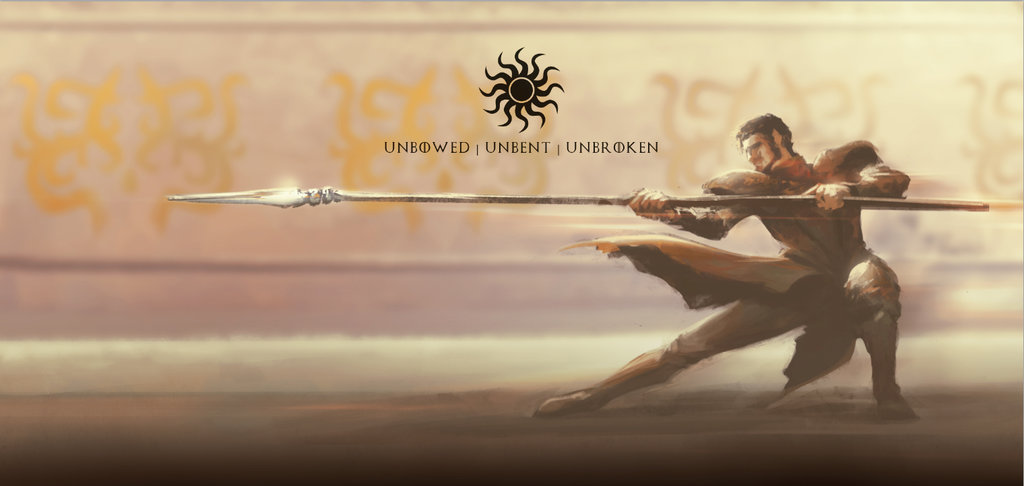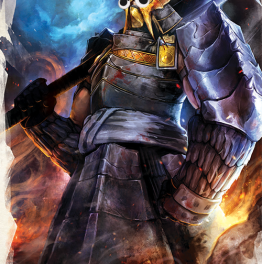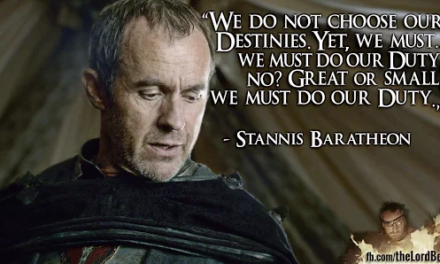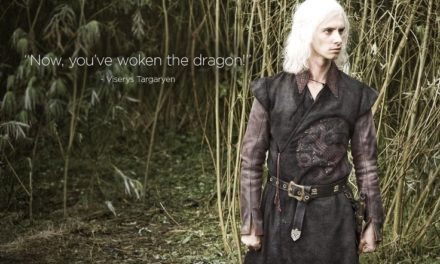Word up gang, it’s your old boy Dan Kaye here (or Daye, if you’ve ever had the pleasure of arguing with me on Facebook). I’ve been pestering Joe from Cincinnati to let me do one of these cycle reviews for a couple of years now, patiently biding my time. It turns out all I had to do was to wait for was the slow decline of the US player base. So here we are, at the end of cycle 3. It’s been a wild ride, hasn’t it? We’ve gone from the rush meta, to the stall and reset meta, then back to the big guy and rush meta, all in the space of 7-8 long months. What a time to be alive.
At the beginning of cycle 3, Martell were not in a good place. Playing Martell was widely considered an auto loss vs the Night’s Watch match up, and all of our tricks were becoming something of slightly limp, known quantities. Cycle 3 brought with it a bunch of new tricks for the faction, as well as economy and draw for a house that desperately needed it. Perhaps most importantly though, were the (incredibly impactful) neutral cards that have become a staple for many Martell builds, and have affected the meta in ways that it can never turn back from.
These cards – Flea Bottom, The Iron Bank Will Have Its Due, The Last of the Giants, Begging Brother, The Annals of Castle Black and Wheels Within Wheels, have had just as much if not more impact on how Martell decks are built and played as any of the cards reviewed below. It would be a mistake of me to review the faction cards without keeping these “enablers” in mind.
Anyway, on with the show.
Out of all the cards Martell received this cycle, this is undeniably the worst. Attachments in Thrones are, generally speaking, the weakest of the card types. This one is an expensive, terminal one that doesn’t help Martell with one of their worst match ups (Night’s Watch), has an effect that can actually help your opponent at times (for example, dodging a reset) and is unlikely to even trigger unless you run it alongside other attachments your opponent will want to Confiscate. Take a moment to compare this to Venomous Blade, which shares the same cost slot. Why would you ever pick Locked Away over a card that can remove a card from the board once, sometimes even twice a turn? Add in the fact that the meta is rife with Greyjoy at the minute (diminishing the value of attachments/removal even further), and that Valar Dohaeris has at last arrived, and you’ve got every reason you’ll ever need to never remove it from your binder.
Unlike Cincinnati Joe, I’m actually a fan of the new Bestow keyword that emerged this cycle. With the overall boost of the amount of economy available in the game, spending extra gold for powerful effects is much more plausible than it would’ve been in previous cycles. Unfortunately, Ellaria’s effect is not one I deem as worth the extra expenditure. It’s far too specific and seems completely at odds with the body it’s found on. Being an efficient 4 for 4 cost/strength bicon with decent icons, Ellaria is a character you’d want to use for winning challenges, not losing them. Martell have got plenty of cheap weenies for the purpose of throwing under the bus for lose-to-win effects, must their mid range characters now be put towards that end as well? For now though, she’s worse than Myrcella, and she’s not making it into many of the successful Martell decks these days.
I’ve probably rated this higher than I should, but that’s because I feel it’s got potential somewhere down the line. Realistically, you’re going to struggle getting the kill effect to go off, but harpooning in defenders that your opponent may want to use to defend other challenges/use as an attacker is decent. Unfortunately, this card shines most when you’re the first player, a position Martell players very rarely want to be in. This has certain applications as a banner card, maybe when run alongside Argy Margey (or HoT Marge, for the uninitiated out there) in a Tyrell build or as part of a Targaryan deck running Banner of the Sun, but those are niche uses.
On the surface of it, this guy doesn’t seem that bad. Attachment manipulation is, in theory, good. As is the concept of forcing your opponent to choose between two choices that both negatively impact them. Dig a little deeper and it becomes apparent why this guy sees almost no play. He shares his cost slot with cards that are all vastly more desirable than him. Bastard Daughters, Greenblood Traders, Orphans of the Greenblood (who I’ll get to later) and even the House Dayne Knight are all better choices, either packing superior effects, more relevant icons, or both. Then you have to consider that any opponent worth their salt will only let his reaction trigger when it suits them, not you. Even vs Night’s Watch, where you’d think he’d shine the most, he can be easily controlled (just let the Haunted Forest take the hit) or killed (Qhorin says hi). Also, returning an attachment to your opponent’s hand just lets them redistribute it more effectively the following turn. I suppose you could use him to bounce your own Venomous Blades back, but there are better ways of doing that.
I don’t actually think I’ve ever put this card in a deck, but I’ve seen it used to good effect by other players. It puts pressure on an opponent in the form of another layer of punishment for the whole lose-to-win theme that defines a big part of the Martell play style. It’s also got some fairly juicy targets at lower strength levels (think characters like Esgred, Varys or Bran) and at the very least can be used to remove claim soak to pave the way for a nasty Retaliation/Marched to the Wall turn. However it’s still an attachment in a faction that has several better options of the same card type, and generally prefers to use attachment slots for more events.
I actually ran this card in the deck that I took to a top 4 finish at the biggest UK regional and a top 16 finish at the Battle of Blackwater road to Stahleck event this year. At that time (cycle 3, pack 3/4 meta), it was good pick as it helped immensely in Night’s Watch match up, being able to remove monocon defenders in a bid to kneel the wall. However, now that Flea Bottom has been unleashed on the game, I feel its value has dropped. The easy application of both the Dornish Spy and Southron Messenger via Flea Bottom have made it somewhat of a redundant combo piece. As long as Nymeria Sand and Dornish Spy continue to be run in decks, it’s theoretically still playable, but unlikely to be seen in the Martell decks of tomorrow as more desirable locations are released.
You might be surprised to find this guy all the way down at number 8. Truthfully, he is the “best” character that Martell received this cycle when you assess him in a vacuum. He’s the second ever printed renown character to be introduced to the faction, and has all 3 icons and a cool effect to boot. He’s the closest thing to a “good stuff” card Martell have gotten so far. And yet, despite all of the above, he’s marginalised within his own faction. Martell, in my eyes, are a faction that relies on a series of combos, tricks and powerful plot effects to win their games. Successful Martell decks favour low cost high impact characters that synergise with other essential combo components over the “beefy renown guy” approach that is prevalent in other factions. Put plainly, I’m yet to see a successful tournament list that features him. If the Doran Lords and Ladies becomes a thing, maybe we’ll see him rise in popularity. For now, he’s consigned to the back benches.
I imagine a few people will probably raise an eyebrow at how high this chap is up on the list. Indeed, if you’ve not played with him, he doesn’t seem all that impressive. If you’re like me though, and ever found yourself wondering “just what does a 10 power Doran’s Game feel like?” you’ll know that his multiplier can be extremely potent. Ideally, you’ll want to be bestowing him for the maximum each time, and I can hear a few of you shouting that 5 gold for that is a big ask. There’s some truth to that. But being able to boost your Secret Schemes draw, or turning on your Knights of the Sun turn 2, is well worth it in my opinion. As more of the used plot multiplier cards are released, his value will only increase (Water Gardens anyone)? He doesn’t go in every Martell deck for sure, but for the style of decks that he does go in, he’s a great boon. And that leads me on nicely to…
If lose-to-win is the first of Martell’s themes, then “the Long Game” is the second. The Prince’s Plan is a card that encapsulates both of those themes within it’s design, becoming stronger as the game goes on and being easy to recur via losing a challenge. I’m a big fan of this card, as it feels powerful yet balanced at the same time. The ability to dish out surprise icons to characters that did not previously possess them is a great boon, and strength pump/challenge math manipulation has always been strong in this game. The best part about this card is that it can target characters from any faction, so it opens up a lot of potential creative applications in banner builds. An Asha with all 3 icons that could net you 3 unopposed challenges all by herself, or a Ser Gregor Clegane capable of doing a one man 13 strength power challenge are just a couple of many possible examples.. The one downside is that it’s expensive, especially if you include the cost to recur it. Still, as an all purpose tool, it’s a fun, proactive event.
The first of the two new ambush characters Martell received this cycle and arguably the worse of the two, (weaker body, higher cost, powerful effect). This card was made infinitely better by the advent of Flea Bottom. The 5 cost ambush is too steep to pay in most cases, but cheating in the messenger for a single gold is a much better deal. The Messenger is good for stripping dupes from characters pre-reset and excellent at keeping the board small post reset. Though, at times it can feel like a chore to get its effect to work, due to the dependence on support (namely Nymeria, but also the not-used-much-these-days icon removal attachments and the much better Dornish Spy). Still, when you do manage to get it to go off, it can swing games.
Ambusher number 2, and this one is a really good. Unlike the Messenger, it’s not hamstrung by a need for additional cards to leverage its effect, managing to do perfectly well on its own. It’s also got better icons and a more reasonable ambush cost. In terms of its effect, anyone who’s been on the receiving end of a surprise Nymeria will know how impactful unexpected icon loss can be. At the very least, it serves as an irritant that your opponent will have to adjust for, and on smaller boards it can lead to the scuppering of their challenge phase. It’s refreshing that Martell actually got an efficient, strong character for a change, making the Spy something of a rarity among orange cards.
I’ve never gotten a card so wrong at first glance as I did this one. In my defence, when it was first spoiled, the greater Thrones community was clueless about what was yet to come in terms synergistic neutrals. Now that we have the whole picture however, I think that this is a card that provides a huge amount of value for the faction. It’s competing with some other very good cards at it’s slot, but if you’re Martell player who favours ambush tactics, Flea Bottom and strong enter play effects then you should be running these guys. There are just so many applications for her. A few off the top of my head are:
- Taking a valuable character back to hand before you reset
-
Rescuing a character from going to the bottom of the deck after a Flea Bottom trigger.
-
Multiple Hotah triggers in the same challenge via a combination of ambush/Flea Bottom and Arianne.
-
Reusing powerful enter play effects (Hotah/Spies, Olenna’s Informant, Newly Made Lord, House Florent Knight, to name but a few).
The list goes on. As we get more cards that move gold to or manipulate the treasury, she will continue to improve.
It’s no real surprise that the second best card of the cycle is the card that lets you draw more cards. Card advantage is important in all card games to varying degrees, Thrones being no exception. Although the reserve mechanic in Thrones acts as a limit on how effective card advantage can be, having a hand full of options is never a bad thing. The one downside of this card is that you don’t really want to see it early game, as having it sit in your hand for a few turns risks you losing it to intrigue claim. But, when it hits its sweet spot mid-late game, the only card draw engine rivals it is Pleasure Barge. There is a slight anti synergy with Faction card kneel agendas like Rains of Castamere or Fealty, but in most cases you can work around this by prioritising what you need more that turn. It’s also worth noting that, if you have a bestowed Ricasso in play, you can be drawing a ludicrous amount of cards by turn 2-3. This will be a staple in most Martell decks for a long time to come.
Every faction got a spicy new limited location this cycle (or not so spicy if you’re a Stark or Greyjoy player), with Martell getting what most would consider the very best of them. Controlling the initiative is incredibly important for Martell, a faction that likes to wait and see what happens before striking back. It also just so happens that some of the best plots in the game boast a high initiative stat. Marched to the Wall was already a firm favourite for Martell players before cycle 3, and now we have Retalliation to play with as well. Heads on Spikes, Confiscation and First Snow of Winter all remain popular choices, and I’ve started to see the brand new Nothing Burns Like the Cold sneaking its way into decks as of late. Before this cycle, the issue with running a plot deck full of high impact plots was the inferior gold curve. Most plots with high initiative are low in gold, in order to balance them. The Dornish Fiefdom has provided Martell players with the best of all worlds. With one of these babies on the table, you get impact, initiative and gold in one tidy little package. There’s no doubt in my mind that this is the premier economy location of the third cycle.
Cycle 3 Recap
At the end of cycle 3, it’s become apparent to me that, perhaps more than any other faction, Martell are a house that do best when they have another bannered to their cause. Martell Wolf attrition decks are scourge of tables everywhere, a build I can only see getting more powerful with the release of cards like Water Gardens. Martell Kraken, the deck I took to moderate success in regional season, combines heavy reset and location hate to find answers for a wide range of match ups. The Banner of the Rose has become synonymous with “Banner of the Combo”, creating insanely consistent combo decks where previously there were none. Martell’s old flame, Banner of the Lion, is still an attractive option, further supplementing Martell’s already considerable ambush and aggro play style. And of course, we can’t forget Banners of the Stall aka Banner of the Stag/Watch, for various stall/passive power gain builds that have become popular and effective in the Autumn days of cycle 3 (the former of which went on to win Gencon – no mean feat).
Most disappointingly perhaps, is the lack of any real power house deck emerging from mono faction agendas – Fealty, Lord of the Crossing, and Rains of Castamere. For me, this is indicative of a faction that has powerful tools that are synergistic with cards that other factions have, but is unable to perform well when left to stand on its own two feat.
I guess, if anything, that’s a thematic conclusion to draw at least.





